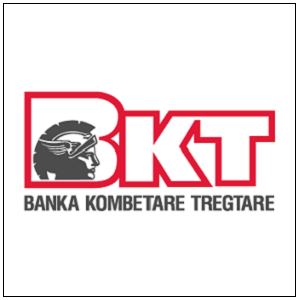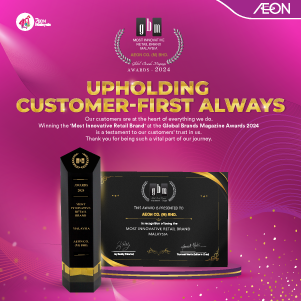Business
10 Ways Smart Businesses Turn Moves Into Strategic Wins

Relocating your office can feel like chaos on wheels—boxes piling up, timelines shrinking, tension rising. But for forward-thinking businesses, a move isn’t just about changing addresses. It’s an opportunity to grow, reset, and evolve. Relocation drives innovation, empowers employees, and aligns with the company’s future.
Leaders who treat relocation as a strategic investment use it to thrive. They tap into real estate, workplace design, and employee experience as levers for competitive advantage. These ten strategies show how companies turn disruption into momentum and transform transitions into long-term gains.
1. Treat the Office Move as a Business Strategy
Relocation affects every corner of your organization. That’s why it belongs in executive conversations.
Wise leaders use relocation to reflect bigger business goals. They align the space with the company’s growth plans, culture, and evolving work models.
Instead of asking, “Where do we put the desks?” innovative companies ask, “How can this space reflect our mission, values, and goals?”
Leading organizations invest in planning a successful office relocation to improve workflows, culture, and brand alignment.
That mindset drives smarter decisions from day one. Forward-looking companies create spaces that align with long-term strategy and short-term needs.
2. Align Space With the Future of Work
Work has changed. Offices need to catch up. Hybrid models, flexible schedules, and remote collaboration have redefined what the modern workplace should look like. Yet too many companies copy outdated layouts that no longer serve their people.
Relocation offers a chance to redesign your space from the ground up, with intention. This means fewer assigned desks, more shared spaces, and technology that enables video calls to feel as seamless as in-person meetings. The best layouts today are adaptable. They flex with the needs of your team, not the other way around.
A smart move sets you up not for where your workforce was, but for where it’s going.
3. Let Your Office Speak Your Brand
You can feel a company’s culture when you walk through its doors. That’s no accident—it’s designed with a purpose. Top organizations treat office design as a storytelling tool that reinforces brand values, work style, and energy.
From the moment clients or employees enter the space, everything from color palettes to material choices should reflect your identity. A sleek, minimal look can speak to innovation. Natural wood tones and open spaces can reflect collaboration and warmth.
In a world where brand perception shapes business, your space must look like you mean business.
4. Make Employees Part of the Process
It’s not enough to create a great space—you have to make a space your people want to be in. The most innovative companies involve employees early and often in the relocation process. Not just to inform them, but to listen to them.
What spaces do they use most? What frustrates them? What helps them feel productive, safe, or energized? The answers may surprise you. Use surveys, roundtables, and informal feedback to guide the design and transition process.
When employees feel seen and heard, they buy into the change. And that buy-in makes all the difference between resistance and momentum.
5. Design for Wellness, Not Just Work
Burnout is real, and buildings can make it worse or better. Natural light, ergonomic furniture, biophilic design, and spaces for rest or focus aren’t luxuries. They’re tools for retention and performance.
Innovative businesses now prioritize well-being in workplace planning. This doesn’t require massive budgets—it just takes thoughtful design. Even small changes like adjustable desks or quiet rooms can impact how people feel at work.
In a competitive hiring market, wellness-forward spaces send a clear message: “We care about the people behind the work.”
6. Bring in Strategic Partners
You don’t have to do it alone—and you shouldn’t. From workplace strategy to move coordination, expert partners help you navigate complexity while staying aligned with your goals.
A strategic partner prevents costly mistakes, keeps your project on schedule, and ensures the final space supports performance and growth.
7. Let Data Drive the Decisions
Decisions rooted in data outperform guesswork. Before you relocate, gather workplace analytics to understand how your space is being used. Which rooms are empty? Where is collaboration thriving?
Use those insights to build smarter, not bigger. Combine real estate data with employee feedback and industry benchmarks. When your layout reflects actual needs, not assumptions, it performs better, costs less, and adapts faster.
Data gives you the power to plan for today and design for tomorrow.
8. Over-communicate to Build Trust
Relocation stirs up uncertainty. Employees worry about commute times, office layouts, and losing their sense of routine. That anxiety only grows in silence.
The solution? Clear, consistent communication—early and often. Build a timeline for announcements. Explain the “why” behind the move. Share updates regularly across multiple channels. Be honest about challenges.
Transparent communication keeps people informed and builds trust. And trust is the currency that makes everything else smoother.
9. Upgrade Your Tech Infrastructure
Relocating your office is the best time to upgrade your IT backbone. This is your opportunity to improve security, boost speed, and create a more connected workplace. Build infrastructure that supports hybrid work, digital collaboration, and scalable growth.
When you treat tech as a foundation instead of an afterthought, your new space runs smoother from day one.
10. Set the Tone in the First 90 Days
The move-in day isn’t the finish line—it’s the launchpad. What happens in the first three months after the move shapes long-term results.
Create an onboarding experience for the new space. Offer orientation tours, clear signage, and fast troubleshooting. The most important thing is to collect feedback. What’s working? What isn’t? Use it to make quick wins and continuous improvements.
The first 90 days are your chance to show that the move is about building a better way to work.
Moves That Make Momentum
Change is hard. But the most innovative businesses don’t avoid it—they use it.
A successful office relocation unlocks potential. It’s the chance to redesign your workplace around your people, culture, and future.
By approaching your next move with vision, strategy, and the right partners in place, you turn disruption into a powerful driver of progress.



















































